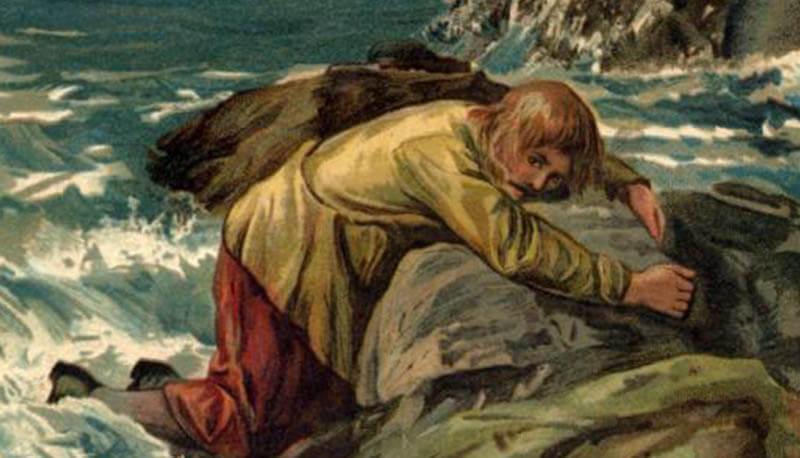Concetti Chiave
- "Robinson Crusoe" by Daniel Defoe is inspired by real-life events and travel literature of the 18th century.
- The novel is divided into three sections, with the first detailing Robinson's departure to sea and eventual shipwreck on an island.
- In the second section, Robinson's survival on the island is chronicled as a diary, emphasizing his resourcefulness and adaptation.
- Robinson saves a native, Friday, from cannibals, illustrating themes of companionship and cultural encounters.
- The narrative concludes with Robinson's rescue by an English ship after 28 years on the island.
Daniel Defoe e Robinson Crusoe
Daniel Defoe (1660-1731) wrote "Robinson Crusoe", his best known novel, in 1719. The story is based on a real event (the account of Selkierk's adventures) but Defoe drew inspiration also from the travel books of the time. "Robinson Crusoe" is made up of 3 sections:
First Section
Robinson leaves his family, he's 19 years old, to go away to sea, hoping to make a fortune, in spite of his father's warnings. After many dangerous experiences he lands in Brazil and becomes a successful planter. During an expedition to Africa, where he was going to buy some slaves, he is shipwrecked on a remote island;
Second Section
Defoe describes Robinson's life on the island. This part is related in the form of a diary, an account of Robinson's experiences: he stays there for 28 years, 2 months and 19 days and keeps a journal in which he describes how he manages to re-create the world he has left.  That's why Robinson Crusoe is the so called "homo economicus". He saves a young savage (Friday, who becomes his servant) from the cannibals. He is rescued by an English ship;
That's why Robinson Crusoe is the so called "homo economicus". He saves a young savage (Friday, who becomes his servant) from the cannibals. He is rescued by an English ship;







 Accedi a tutti gli appunti
Accedi a tutti gli appunti
 Tutor AI: studia meglio e in meno tempo
Tutor AI: studia meglio e in meno tempo